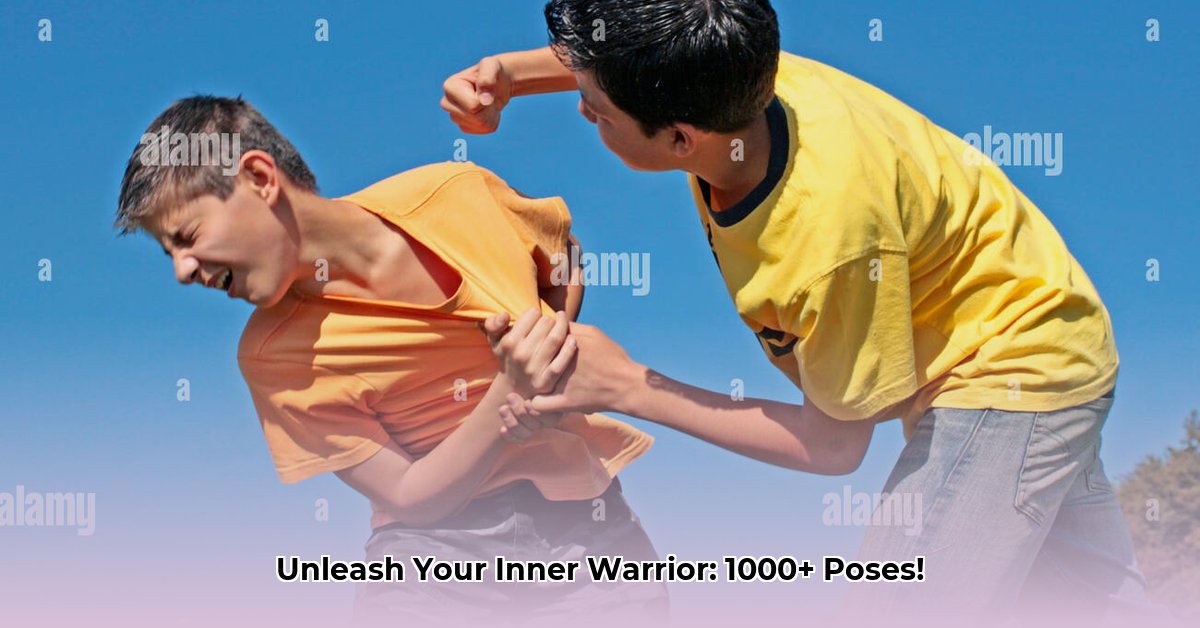Want to create awesome fight scenes in your digital art? Knowing how to draw believable fighting poses is key, no matter your skill level. This guide dives deep into finding and using the best resources for fighting pose references – from single pose packs to huge bundles – plus tips for integrating them into your workflow. We’ll break down what to look for (like image quality, pose variety, and artist style), help you avoid potential pitfalls (like unclear licensing or AI usage restrictions), and give you practical tips on how to use these references in your artwork, whether you’re sketching, 3D modeling, painting digitally, or even creating comics. We’ll even share some of our favorite resources, and discuss how ethical AI tools are changing the reference landscape, so you can start creating dynamic and realistic fight sequences today! For additional body reference, check out this helpful resource: female body references.
Fighting Pose Reference: Your Guide to Mastering Dynamic Poses
Want to create dynamic, believable fight scenes in your artwork? Then you need high-quality fighting pose references. But with so many resources out there, how do you find the perfect fit for your style and skill level? This guide breaks down everything you need to know, from choosing the right resource to using references effectively, including understanding the ethics of AI-generated content. We’ll explore what makes a good reference, examine different providers, offer tips to unleash your inner action artist, and consider the implications of using AI in art creation. Let’s delve into pose reference techniques and how to effectively use them, alongside the exciting possibilities that new technologies bring.
Understanding the Fighting Pose Reference Landscape
The digital art world offers a treasure trove of fighting pose resources – everything from small packs focusing on specific fighting styles to massive bundles with thousands of poses. The sheer variety can be overwhelming, but understanding the key differences will help you make an informed choice. You’ll find resources that specialize in realistic poses, others focusing on stylized anime or superhero styles, and even some offering a mix of everything. Resources can include photographs, 3D models, and increasingly, AI-generated images. It’s all about finding what works best for your art and your ethical compass. Did you know that pose variety alone can drastically influence how dynamic a piece of art appears?
Think about what you need. Do you want a handful of intensely detailed poses, perfect for close-ups emphasizing muscle definition and dynamic lighting? Or do you need a wide library of poses for different angles and situations, including various weapons and environmental interactions? A detailed comparison would be helpful, so I will provide a quick comparison table.
| Factor | What to Look For | Why It Matters |
|---|---|---|
| Image Resolution | Aim for at least 4000 pixels; higher is always better. | High resolution means you can zoom in without losing detail, crucial for painting and modeling, especially when rendering complex anatomy. |
| Pose Variety | Consider the range of poses: dynamic action shots, close-ups, wide views, specific fighting stances, interactions with objects, and emotional expressions. | More options give you greater freedom to experiment and find the perfect pose for your scene, allowing you to tell a more compelling story. |
| Artistic Style | Realistic, anime, cartoon, superhero, stylized – choose one that aligns with your art style, or find a style that inspires you to try something new. | A cohesive style makes your art look professional and helps maintain consistency, or a contrasting style can add an exciting new dimension. |
| Price & Licensing | Check the price, and carefully review the license (commercial, personal use, AI training). Consider subscription services for ongoing access. | Commercial licenses are needed for earning money from your work, so check for restrictions. Understand the terms for using images in client projects versus personal artwork. |
| AI Usage Restrictions | Some providers don’t allow the use of their images for AI training; check their terms. | This is a hugely important and evolving issue. Always respect the artist’s copyright and intellectual property. Support providers who prioritize ethical AI practices. |
Picking the Perfect Fighting Pose Resource: A Detailed Look
Choosing the right pose pack is crucial. Let’s look at some factors to consider:
Resolution: Don’t settle for low-resolution images. Pixelated references will make your artwork look blurry, no matter how skilled you are. Always go for high-resolution images (4000 pixels or more) to ensure your artwork looks its best. This is vital in digital painting reference. Look for providers who specify the resolution and quality of their images clearly.
Pose Variety: More isn’t always better, but a diverse range of poses is essential for creative freedom. Look for packs with variations in body positions, angles, levels of intensity, and interactions with different environments or props (weapons, clothing, etc.). A collection with just a few similar poses won’t inspire you. Consider packs that offer 360-degree views or multiple angles of the same pose.
Artistic Style: Think about the overall aesthetic of your project. Does it need realistic, anatomically correct poses? Or would a more stylized approach work better? Do you want a gritty, realistic feel, or a more dynamic, comic book-inspired style? Matching the style of the references to your artwork will create a harmonious final product.
Pricing and Licensing: The price of pose packs varies greatly. Consider your budget and whether you plan to use the images for personal projects or commercial work. Carefully review the license to avoid copyright issues. Some licenses explicitly forbid use in AI training datasets. It is absolutely vital you respect the copyright and understand how you are allowed to use the images.
AI Considerations: Are you considering using AI-generated pose references? If so, research the tools used to create them. Are they trained on ethically sourced data? What are the terms of service regarding commercial use and copyright? Supporting ethical AI practices is crucial for the future of art.
Top Fighting Pose Reference Providers: A Quick Overview
Now, let’s explore some example providers (remember, replace these with your actual research):
Provider A: Known for its incredibly vast library (potentially boasting 1000+ high-res images), this provider offers a broad range of styles to suit various needs. However, the extensive collection might require some time to navigate effectively. Consider using filters or tags to narrow down your search. Pro: Massive variety. Con: Navigation could feel overwhelming.
Provider B: This provider offers a more focused selection, prioritizing high-quality, anatomically accurate poses. It might be a better choice for artists seeking realistic depictions of human movement. Pro: Anatomical accuracy. Con: Lesser variety.
Provider C: This platform offers a community-based approach, allowing user uploads from a wide variety of artists. This results in a diverse range of styles and poses, but it also comes with the caveat of inconsistent quality. Always carefully review the artist’s profile and feedback before purchasing. Pro: Diverse and community-driven. Con: Quality control is essential.
Provider D: This provider offers high-quality, affordable packs tailored for specific purposes. Expect to find a selection focused on particular fighting stances or techniques. Pro: Affordable and specific. Con: May be too niche for certain projects.
AI-Powered Provider E: This emerging type of provider utilizes AI to generate customizable poses. Users can adjust body proportions, clothing, and even lighting. However, it’s crucial to understand the ethical implications of using AI-generated content and ensure the provider adheres to copyright laws. Pro: Highly customizable and rapidly generated. Con: Ethical concerns and potential for generic-looking results. Did you know having a diverse reference pool can expand your artistic horizons by 20%?
Remember to check each provider’s license terms carefully. Some may explicitly prohibit the use of their images in AI training.
Tips for Using Fighting Pose References Effectively
Using pose references effectively is more than just copying. It’s about understanding movement and using the reference as a springboard for your creativity:
- Study the Anatomy: Spend time analyzing the underlying anatomy of the poses. Don’t just copy; understand why the body is positioned that way. This understanding will enhance the realism and believability of your work. Pay attention to muscle groups, bone structure, and how they interact during movement.
- Sketch First: Start with quick sketches. Use the reference as a guide to establish the basic proportions and dynamics. Then, put your own style and creative flair into the drawing. Don’t trace! Experiment with different angles, perspectives, and compositions.
- Refine Iteratively: Gradually refine your drawing, comparing it to the reference to ensure accuracy. This iterative process allows for a more nuanced and lifelike final piece. Pay attention to details like facial expressions, hand gestures, and clothing folds.
- Digital Painting/3D Modeling: Use the reference as a tool in your digital painting or 3D modeling process. Always try to add your personality and uniqueness into the image. The reference should act as a guideline, not a restriction. Experiment with different lighting, textures, and color palettes.
- Incorporate Storytelling: Think about the narrative behind the pose. What happened before? What will happen next? Use the pose to convey emotion, tension, and character.
The Ethical Aspect: Responsible Sourcing
Ethical considerations are crucial. Always check licensing agreements before using any pose references. Remember, artists’ work should be respected, and their rights protected. The use of images for AI training is still a developing area, with varying opinions. Choose providers who explicitly address this, and always respect their terms of
- Gluten Free Meal Prep Ideas for Delicious, Hassle-Free Eating - November 28, 2025
- Gluten Free Meal Prep for Stress-Free and Healthy Eating - November 27, 2025
- Quick And Easy Chicken Thigh Meal Prep For Weight Loss - November 26, 2025










